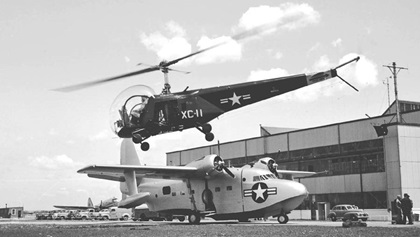Airports: Floyd Bennett Field, New York
The choice of record-setting pilots

In the 1920s, Bennett envisioned an airport to serve New York City, built on a spit of land at Jamaica Bay. The airport opened in 1930, two years after his death—he died in a Quebec hospital after being thought to have contracted pneumonia in the cockpit during a flight.
Bennett Field should have thrived as a commercial airport, but it did not. In the 1930s, it competed with New Jersey’s Newark Airport and suffered through the Great Depression.
With light airline traffic and a 5,000-foot runway, Bennett Field was the choice of record-setting pilots such as Wiley Post, who departed Bennett Field on the first solo around-the-world flight in 1933. Five years later, Howard Hughes set the latest record time for an around-the-world flight from Bennett Field. Numerous female pilots, including Jackie Cochran and Amelia Earhart, set new altitude, distance, and endurance records from the airfield throughout the 1930s.
The most humorous flight out of Bennett Field must have been made by “Wrong Way Corrigan” in 1938. Denied permission to make a trans-Atlantic flight, Corrigan filed a flight plan for California, but “accidentally” landed in Dublin a day later.
During World War II, the military deployed antisubmarine patrol squadrons and units that commissioned military aircraft produced at factories near the field.
The last record flight was made in 1957, when soon-to-be astronaut John Glenn set a supersonic transcontinental record, flying an F–8 Crusader from California to Bennett Field in 3 hours 23 minutes.
In the 1970s, the airfield was closed and developed into the Gateway National Recreation Area, featuring ballfields, trails, wetlands, an archery range, marina, and the only campground in New York City.
The surviving hangars and terminal building are listed on the National Register of Historic Places as exceptional examples of interwar aviation architecture. Visitors can tour the historic hangar row, the 1930s terminal, walk the massive runways, and watch volunteers restore vintage aircraft.
Today, only New York City police helicopters and RC model airplanes fly from this historic airfield.
Dennis K. Johnson is an aviation writer living in New York.
Visit this site
With your Pilot Passport on the AOPA app.



